Ficus: features and homeland of origin

Ficus is a plant included in the list of the most popular acquisitions of indoor floriculture lovers. Ficus has long been associated with domestic culture, although in the natural environment it is considered a tree, and not the smallest one. It grows in the Malaysian tropics and subtropics, in the Philippines, as well as in the southeast of Asia. The researchers managed to isolate about 900 species of ficus with significant interspecific differences. Let's consider the features of this culture in more detail.

Description
Ficus belongs to the mulberry family. The most prominent representative of this family is the fig tree. The most popular among domestic florists is Benjamin's ficus.
In its natural environment, ficus can grow as a shrub, as a tree, and even as a bizarrely creeping or climbing liana. In this case, the liana can be very large (a vivid example is the shaggy ficus). Plants are also capable of developing as epiphytes (golden ficus). Surprisingly, they tend to put down their own roots, capturing other plants. Choosing a launching pad for a certain culture, they begin to develop rapidly. In some ficuses, aerial roots gradually reach the ground (ficus-banyan).
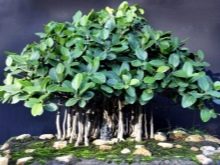
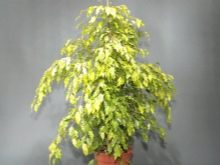
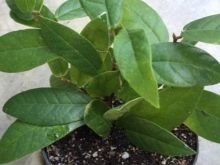
The prevailing life forms of the plant: epiphytes, banyans, stranglers, caudal, earthen. In some representatives of the tropics, at several stages of development, there is a rapid change in life forms. Making their way on another plant, they turn into stranglers, and then into banyans. But there is another way - to live your whole life as an evergreen tree.

Lovers of studying the secrets of nature are interested in precisely the strangler. Capturing any culture, he organizes himself excellent conditions, the main of which is access to lighting. If the ficus is located in the crevice of the trunk of its victim, it acquires protection from the roasting luminary. Since there is a wax coating on the leaf itself, the culture has enough moisture for full growth. As soon as the bush gets stronger, it takes out aerial roots. The soil with water and minerals is low, so the plant is "fed" with the humid air of the tropics.
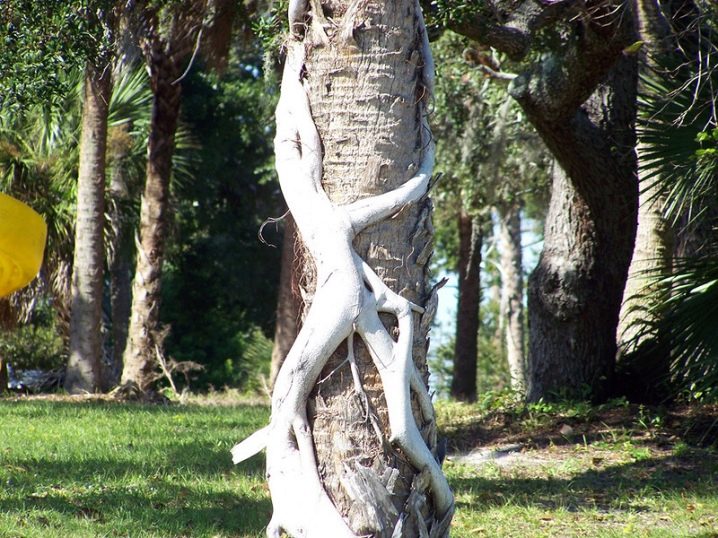
The grown roots of the ficus plant entangle the host plant. A kind of skeleton appears that inhibits the growth of the victim. This leads to the fact that sooner or later it will definitely dry out.
As for the banyan trees, after visiting India, you can see the outstanding Calcutta botanical garden, which is called the "Great Banyan". There you can find plants that seem to be man-made: their appearance is so incredible. There is, for example, a ficus with 1000 trunks, which is more than 160 years old. Some scientists have drawn a parallel between the banyan tree and a hinge system that can withstand even powerful gusts of wind.
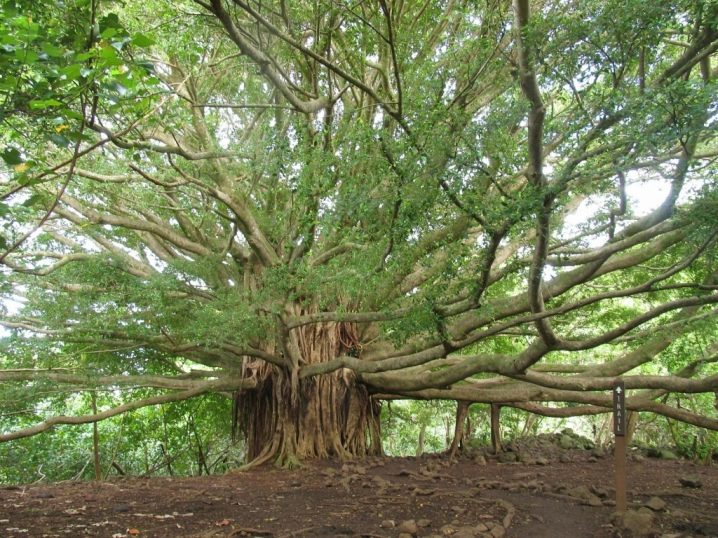
Once in New Guinea, you can see climbing vines, which, with their grasping air roots, attach to the support. By the way, you don't need to go to exotic lands to see a similar miracle: even the tiny ficus (the official name), used for wall decoration, partly resembles its tropical counterparts.
Origin
Of the whole variety of ficus species, about two dozen are grown at home. One of the leaders is rubber. It is unpretentious in care, grows and develops easily, boasts good immune protection against many diseases. Such a ficus calmly tolerates pruning and undergoes a quick recovery. A tree flower with proper care can grow up to two meters.It has dark foliage, oval leaves can grow up to 35 cm. And this promising culture comes from Burma, as well as Nepal, the Himalayas and partly from West Africa.
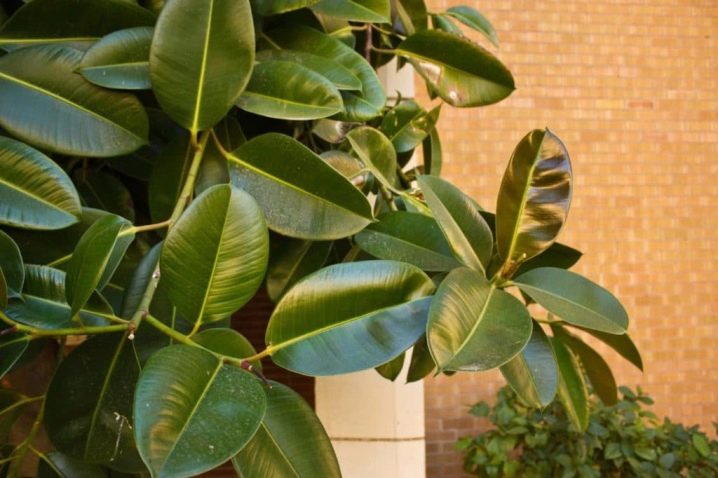
Consider the origin of other types of ficus.
- Lyre flower. It is notable for its light emerald leaves. The name speaks: the flowers really resemble a lyre. It comes from the West African forests in the plains. Not in a dwelling, it grows up to 11-12 meters.
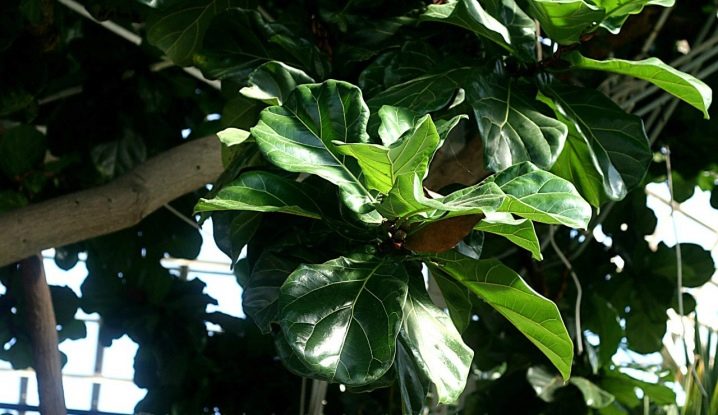
- Pimula. This is an ampelous plant that looks like a climbing and creeping vine. Its origin is Asian, and the culture is still growing there today. The leaves are not the largest, heart-shaped, they cover the ground with a decorative carpet. Adult crops can have leaves up to 10 cm in diameter.
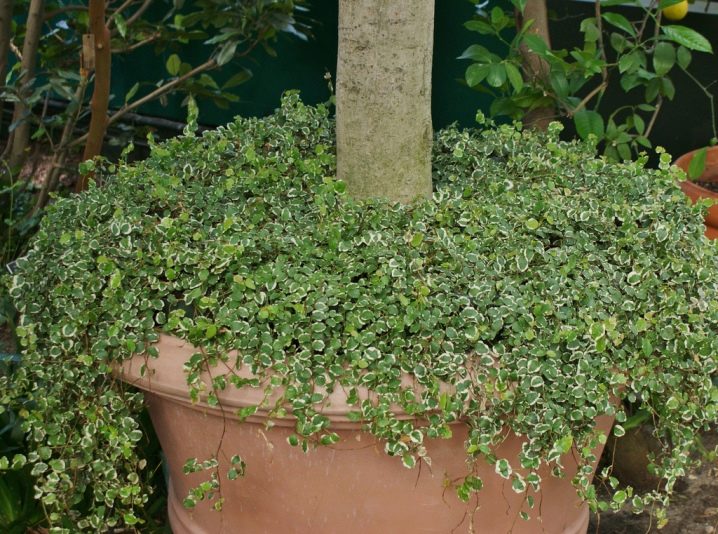
- Creeping variety. He is originally from America, Africa. It also grows in Asia. It is a small creeping species of ficus with cute rounded foliage. Equipped with adventitious roots, which helps him to deftly climb tree bark to a decent height.
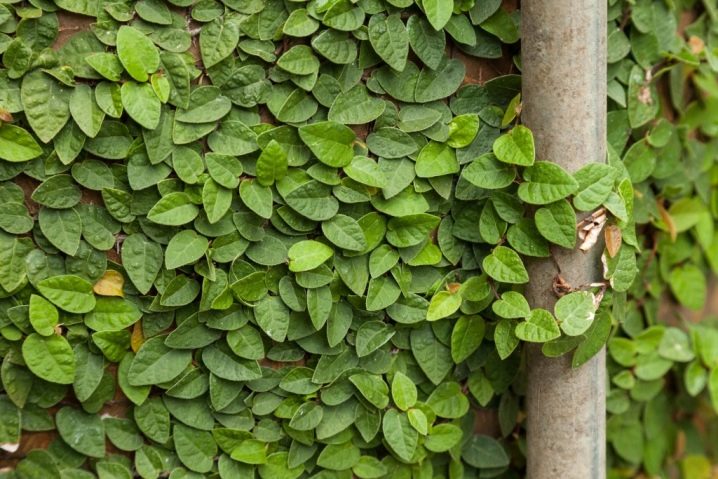
- Retusa or laurel ficus. Originated from the tropics of Taiwan and Southeast Asia. It is sometimes called Cuban. Today, this home flower has another function: it is often used to form bonsai, which is facilitated by its unusual stem.
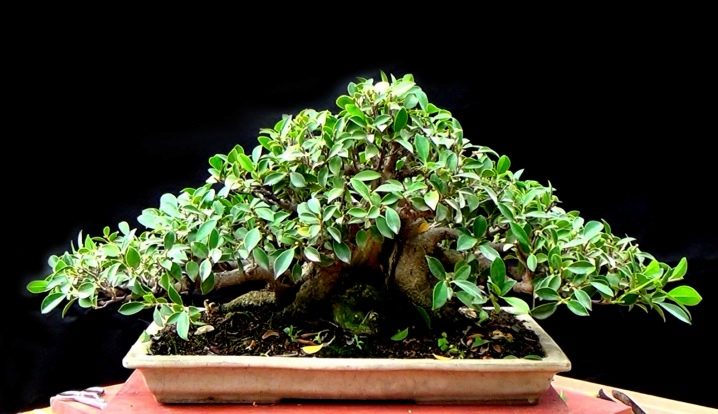
- Rusty or Australian ficus. The birthplace of this plant is immortalized in its name - Australia. It is difficult to call it indoor, because it is an evergreen tree with graceful reddish shoots and dark emerald foliage, which can grow pretty. The apical shoots are edged. Their color is pink.
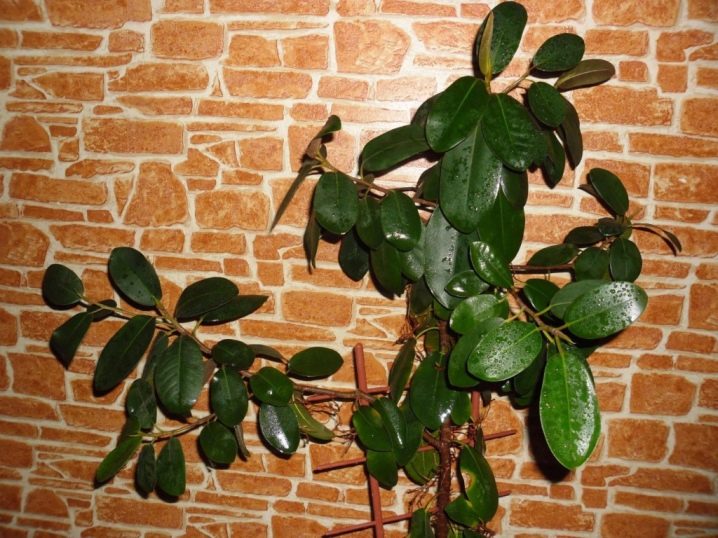
- Benjamin's variety. The history of this variety is familiar to many, the growing area is the tropics of Asia. There it can be found at the foot of the mountain, this is a favorite place for ficus. In the wild, it grows up to 20 m, at home - up to 2 m. The tree symbolizes Bangkok, it is even considered its brand. The leaves of the tree are similar in shape to an egg.
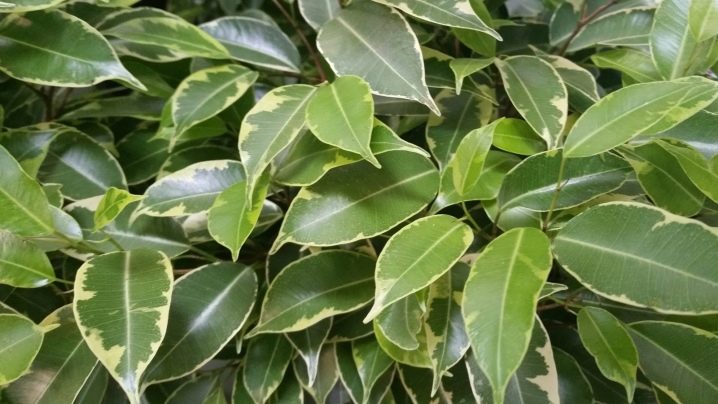
- Ivy. Growing countries - Laos, Thailand, as well as South China. This ficus belongs to climbing shrubs with air roots, which are located in the nodes of the leaves. It is the leaves that are the pride of the variety. They are ovoid in shape, their color is rich, green, and there are graceful veins.

These are just a few popular varieties. But seeing their description, you can understand where the flower came from, which you are going to use to decorate your own home. Bringing the aesthetics of the tropics into your home is sometimes very useful, and if you consider that the plant really purifies the air, reducing the content of formaldehyde, benzene and pathogenic bacteria in it, then it is even necessary.
Some sources of folk signs say that the ficus in the home is unfortunately. Where the legs grow from in this belief is completely incomprehensible, because in most cultures the ficus symbolizes wisdom. It is even used in meditation incense recipes. According to Ayurveda, there should be a plant in a living room.
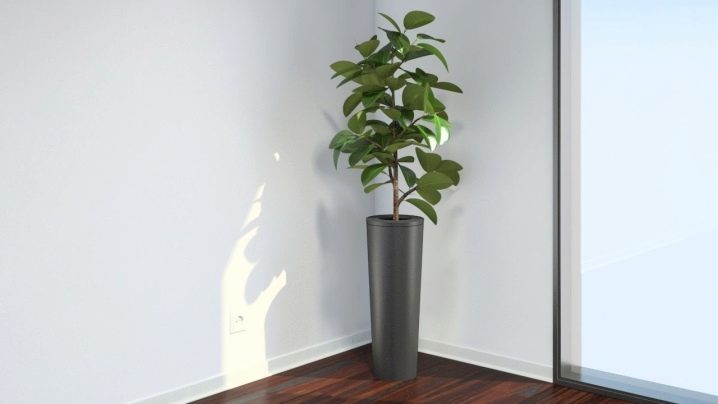
It helps restore energy balance and relieves anxiety. Only rubber ficus should cause some concern: it releases a substance into the air that can cause an attack in asthmatics.
How did you get to Russia?
There is still no exact answer to this question, but there is information about the widespread prevalence of ficus in the 19th century in the Russian Empire. It rarely grows in temperate climates, but, for example, a fig tree (this is also a mulberry tree) is found in the Crimea. Figs are also a close relative of ficuses. Its biological name is "carika".
Where exactly the ficus was brought from is unknown. There are several versions, one of them is in favor of New Guinea. There, to this day, you can see ficuses that grow up to 40 m, and reach 5 m in girth. They have large, almost always glossy leaves, sometimes drooping. Earthen figs also grow there, the shoots of which develop underground. Succulents grow in arid areas.Today they are in vogue and are widely used in apartment design. For example, palmera - to represent succulent ficuses, a fairly common and popular plant.

Each species of ficus has its own habitat. In the Amazon basin, for example, unique specimens are found. Therefore, no one knows exactly how the ficus appeared in our area. How he was brought, with whom he came, how he found such a rapid spread in Russia - questions that are still being studied. It is assumed that this is still mining from the southern regions, possibly from the Mediterranean.
Care
Since ficus is a tropical plant, it needs good lighting. However, direct scorching rays are not the best option, as well as a heating device located near the ficus. If you see that the plant lacks natural light, take care of artificial lighting.
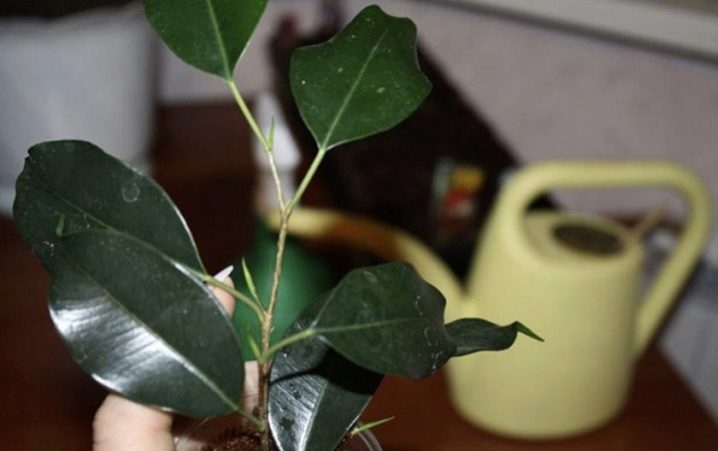
Professionals give some more important tips for crop care.
- The plant loves humidified air. It should be sprayed once a week with cool water if the microclimate is humid. If the air in the room is dry, it is worth spraying more often.
- One watering per week is the maximum. Ficuses do not tolerate overflow.
- The correct approach to the ground is the alternation of fertile and sandy layers. Thanks to this, the plant will be healthy and long-lasting. The soil for the ficus should be moist and loose. But you can't just loosen the ground: in order not to injure the delicate roots, it is the alternating layers that provide looseness and air flow.
- As it grows, the ficus should be transplanted. If the plant is already mature, then in one tub it can live for years. The main thing is to feed it, periodically replacing the soil.
- It is necessary to form the crown in autumn or spring, when the plant either already goes into hibernation, or has not yet finally "woken up". Shoots can be pruned with pruning shears, but you should not just break off the branches. Do not forget to process the slices with a solution of potassium permanganate to prevent rotting.


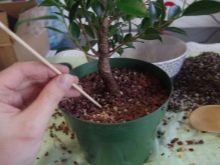

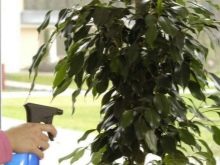
If you create ideal conditions for the ficus, then it can become a long-liver. But if you refuse to water the plant for a couple of weeks, let it overgrow with dust, pour coffee residues and other liquids unsuitable for culture into the ground, the young plant will most likely die. But adult ficuses have time to "build up their armor", so they are not so vulnerable.
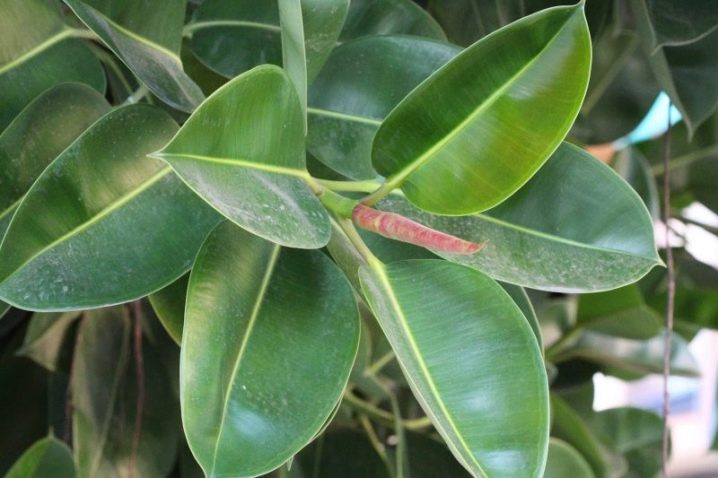
You need to feed the plant with special means intended for it.
To stimulate growth, you can use a rosebush top dressing. Good nitrogenous mineral fertilizers. As a high-calorie top dressing, you can use ash and tree resin.
The plant does not tolerate drafts, so lovers of frequent airing should think about another green "pet". Even the most expensive ficus can quickly get sick if you place it near a battery. If a putrid smell begins to come from the pot, mold can be diagnosed. In this case, the plant will be saved by a transplant. And in order to avoid the invasion of pests who are not averse to feasting on nutritious ficus leaves, the latter need to be wiped more often.
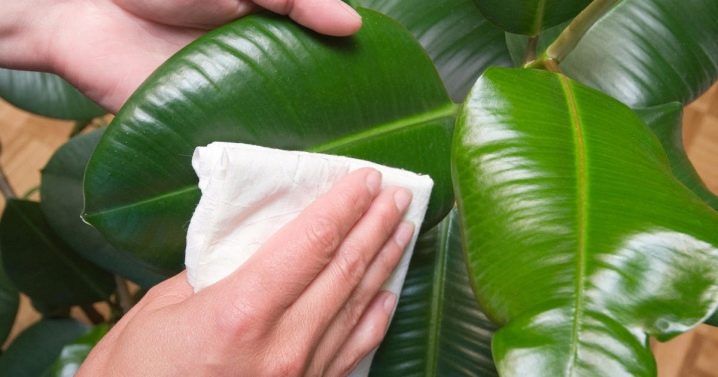
For more information on ficuses, see the video below.































The comment was sent successfully.